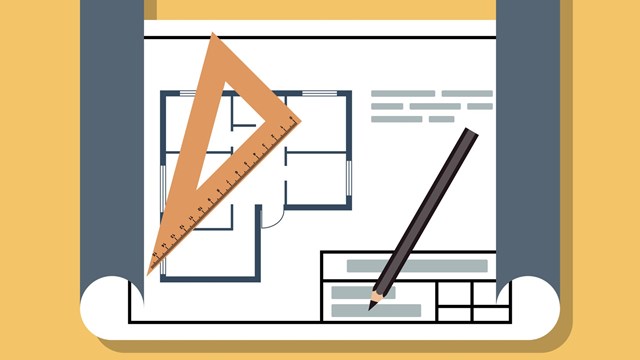The Harbor Towers, a pair of 40-story residential buildings designed in part by noted architect I.M. Pei, offer some of the most exquisite views of the Boston harborfront and skyline. Once out of place in what was a district of warehouses and parking lots, Harbor Towers, located between the New England Aquarium and Rowe’s Wharf, has become one of the city’s more prestigious residences
.Originally built as “affordable” rental housing, condo units in Harbor Towers now sell from $395,000 to $2.75 million, depending on square footage, number of bedrooms, and floor. It is, in short, swanky. Imagine the owners’ surprise, then, when they were informed this past November that the HVAC system was shot, and that the board was leveling a one-time assessment to pay for the repairs: $75.6 million total, more than twice what it cost to build the complex.
Individual owners faced assessment fees that were estimated at $80 per square foot, and topped $400,000. And they were due, in full, at the end of the month. Happy Thanksgiving.
An extreme example, to be sure, but what happened to Harbor Towers can happen to your condo, if you fall behind in reserves. But how do you determine if you’re behind? And if you’re behind, how do you catch up? If you do have to catch up, how do you get the unit owner support that you will need, and what problems are you likely to face?
Let’s take a look.
How Much Money Do you Need?
At first, the idea of putting money away for a rainy day seems daunting. For starters, how much money should be kept in reserve? Is there some sort of science to it?
In fact, there is.
“A good tool is to utilize a reserve study, so you can assess long-range planning,” says Dan Picha, vice president and portfolio manager in the Community Association Banking department of Rockland Trust, in Plymouth, Massachusetts.
A reserve study, more exactly called a condition assessment, examines the common areas of a condominium—hallways, basements, roofs, HVAC systems, and so forth—and determineswhen they will need to be repaired or replaced, and how much it will cost.
There are the equivalent of actuarial tables for roofs and boilers and water heaters, prepared by professional engineers who specialize in their application. Rebecca A. Gutierrez, R.S., is the office manager and project engineer for Facility Engineering Associates, P.C., a national engineering and reserve study firm with a Waltham, Massachusetts office. There is specific information Gutierrez needs to assess a condo’s condition. “How large is thebuilding?” she asks. “How old is it? Have they done studies in the past? Are there any particular concerns the board has now—does the roof leak?”
After gathering the relevant information, it then becomes a matter of accounting.
“We itemize the list for the capital expenditure forecast, and project it out over 20 years,” she says. “We say, ‘Overthe next 20 years, we’re projecting, you need to fund so many dollars.’”
Reserve Study Numbers Can Seem “Overwhelming”
In a 40-year-old complex such as Harbor Towers, there are elements that studies will show need to be replaced. The dollars in question can seem unfathomably large, especially for a big complex. The reserve study can be “a little overwhelming, because it shows how much money you’re supposed to put away,” says Picha, who is also president of his condo association. The reserve study is a fluid document. Because it is a forecast, it bases its calculations on history, and cannot always predict the distant future.
“A professional reserve study needs to be updated every three to five years, because common elements might start to age differently or construction costs/inflation may change,” says Erin M. Alicata, assistant vice president and New England regional account executive for Community Association Banc.
Picha agrees. “A reserve study done ten years ago talking about asphalt roof shingles wouldn’t take into account the oil industry changes in the last quarter,” he explains. In fact, reserve studies almost always show that saving at the current level is insufficient, Gutierrez says. How do condo associations raise money? Not by bake sales, and not by car washes. “One place: unit owners,” says Alicata. “There are two ways: by putting additional moneyinto reserves, or by getting a loan to help offset building reserves.”
This means that the board has a choice: Raise the monthly maintenance fee to either allocate more for the reserve fund or offset the cost of the bank loan, or special assessment.
“Usually, a special assessment is the method for catching up on reserve fund needs,” says H. Alan Mooney, P.E, the president of Criterium-Mooney Engineers in Portland, Maine. “That's a one-time charge to owners. Most bylaws and state laws permit special assessments when necessary, although it is not popular with owners and should be avoided, when possible, by good planning and proper reserve funding.”
Special assessments are indeed not popular with owners—especially when the bill approaches half a million dollars, as with the penthouse apartments at Harbor Towers. Still, if the assessmentsare relatively rare and don’t break the bank, there is benefit to keeping maintenance fees low, especially in today’s real estate market. Lower fees make for easier sales.
“The problem is two-fold,” says Alicata. “Most often people go into condos because they don't expect to be there very long. It is looked at as a transition period; usually owners are starting out or older in age. Conse-quently, they have the mindset they do not want to build up their money to replace common elements, and the result is general apathy. They buy because they don't want to be responsible for anything.”
“Owners are often skeptical that work is really needed and/or that the estimated costs are accurate and, therefore, are skeptical that additional funds are needed,” says Mooney. “They can also feel that maintenance and repair projects can be put off, as they might do in a privately-owned home. They sometimes do not understand that an HOA has a responsibility to maintain the condition and value of the facility.”
“You run into all sorts of issues,” says Gutierrez. “Owners say, ‘It’s not my fault—I didn’t live here—it’s not my debt.’ Or, ‘I’m not going to live here in five years—I don’t want to pay.’”So how do boards convince owners that additional funds are needed?
Communication Essential
“The best way to deal with that is good, objective, credible communication,” says Mooney. “First, it's important to distribute and explain the bylaws and state laws that relate to the proper operation and management of an HOA. Second, it's important to provide complete, accurate, clear information about the work needed and the funding required.”
“Having fully funded reserves is 100% the correct thing to do,” says Alicata. “Convincing unit owners is a matter of them understanding that every day they use up a little bit of the common elements, and it is their responsibility to pay for that use.”
Picha suggests calling some attention to the improvements. The owners “need to see value in what you’re doing with their money.” Collecting fees and assessments is like a municipality collecting taxes, he says. “It’s like the sign you see when they do construction on highways: ‘Your tax dollars at work.’”
“Generally, when I am working with an association to finance a project, the board has been thinking and planning for a long period of time,” says Alicata. “They may be the second or third board that has been charged with the repair or replacement of common elements. So in general the process takes a long time. Homeowners aren't always receptive to the need to do an improvement project, never mind funding reserves for possible improvements down the road. But eventually the roof, siding, pavement, etc. wears out and the current homeowner is forced to foot the bill for the improvement, which is necessary but not fair especially because previous homeowners enjoyed the same common elements butdid not contribute to their upkeep.”
The solution is to do reserve studies and stick to the plan they lay out. And owners who complain don’t understand what’s happening. “First and foremost, if there’s not enough reserves, it’s not the fault of the existing board,” says Alicata. “There have been several previous boards, budgets have been approved byunit owners each year, so there is no fairness to criticizing current boards that reserves are not sufficient.”
And if condo fees have to be raised, then condo fees have to be raised.
“It’s a battle between what’s best for the individual homeowner versus what’sbest for the association,” says Picha.
But owner and association are not always at cross purposes—not when the objective is to avoid a $75 million special assessment.
Greg Olear is a freelance writer for New England Condominium and other publications.







Comments
Leave a Comment